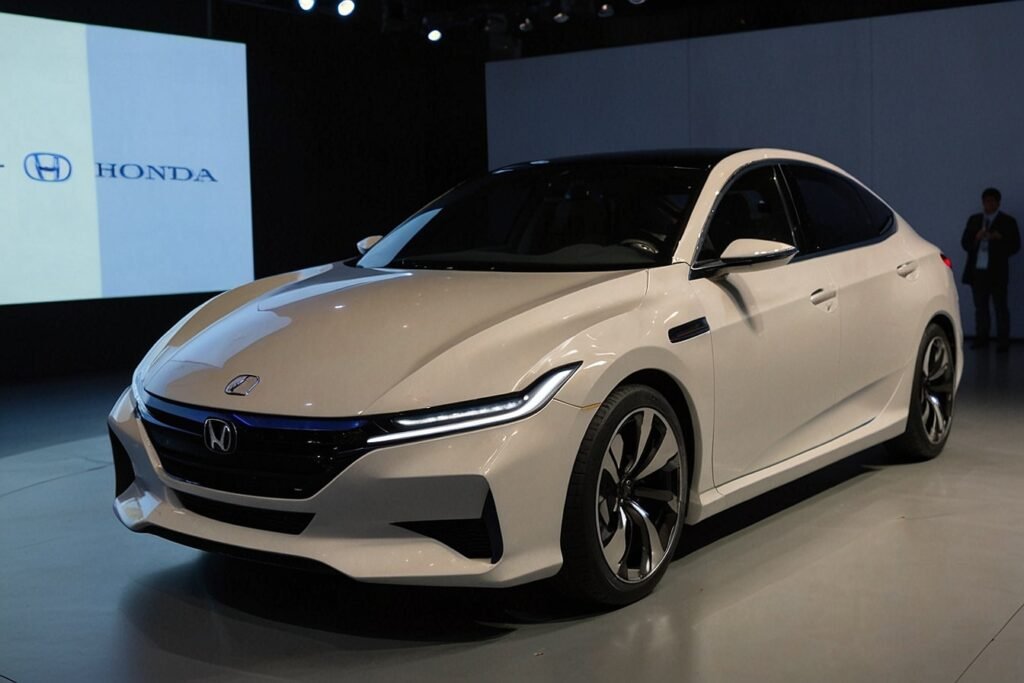
On October 9, 2025, Honda shocked the car industry with remarkable technologies of its future 0 Series electric cars (EVs), which marked a paradigm change in its electrified mobility. With the focus on the philosophy of Thin, Light and Wise, the announcement makes Honda a formidable competitor in the EV market and responds to the needs of consumers, in terms of efficiency, affordability, and innovation. We discuss the major innovations, their implications, and their efforts to transform the future of driving below.
The New Era of 0 Series Platform
The 0 Series at Honda is a blank-sheet EV redesign, rather than retrofitting existing structures to fit the electric motor. The technologies revealed are based on three pillars: the thin, the light, and the wise. The thin aspect is focused on slimmer battery packs, which lowers the height of the vehicle, enhancing the aerodynamics and the interior space. With the reduction of drag, Honda will increase range without large batteries as a cost driver that is prevalent in EVs.
The principle of light addresses the reduction of weight which is one of the most important factors of efficiency and performance. Honda has designed vehicles that are much lighter than their competitors, using sophisticated materials with a modular chassis, having the potential to travel a range of more than 300 miles on a single charge. This will not only make it energy efficient but also provide a sportier driving experience based on Honda’s motorsport heritage, which provides a dynamic handling performance.
The smart component brings in a software-defined vehicle (SDV) scheme, a combination of AI-based systems and an in-house operating system. This allows such functions as customised driver profiles, adaptive energy controls and over-the-air (OTA) updates, which continuously expand the capabilities of the vehicle after sale. It is compatible with advanced driver-assistance systems (ADAS), which will facilitate the further automation of further models.
The prominent technological highlights include key technological regions like transport, tourism, industrialisation, and automation.
Key Technological Highlights
1. Next-Gen Battery and Powertrain
The 0 Series by Honda has high-density battery cells that are designed to be charged within the shortest time possible and last long. The slim battery design has cut down on weight without compromising capacity, and it overcomes the issue of range anxiety with projected ranges that are competitive with the industry leaders. The racing technology behind the powertrain gives it immediate torque and responsive handling, which is attractive to both a racing and an ordinary car user.
2. Software-Defined Architecture
The new operating system is outstanding and has the capability to connect and provide a user-oriented interface seamlessly. It features holographic displays, voice control, and real-time energy optimisation, all of which depend on the driving conditions. OTA updates keep the car up to date with all the latest software, whether it is infotainment improvements or performance changes, it lengthens the lifecycle and value of the vehicle.
3. Sustainable Manufacturing
Honda focused on environmentally friendly manufacturing, recycled materials and low-energy consumption. The 0 Series strives to satisfy the high global standards of emissions and lower the carbon footprint of production. The modular designs are also easier to assemble and may reduce the cost, as well as make EVs more affordable to a wider market.
4. Coming in Prototypes: SUV and Saloon
There were two concept cars: a Saloon and an SUV that pre-empted the design language of the 0 Series. The Saloon, a smooth sedan, is a futuristic beauty that has a low profile and smooth interiors. The SUV is adjusted to North America, and its main focus is on practicality without losing its style and competence, as it aims at families and adventure travellers. The two models will be produced in 2026, with the SUV projected to be a flagship in key markets.
Strategic Implications for Honda
This introduction is a turning point for Honda, which has been losing to its competitors in the EV scene. The 0 Series will aim to capture market share in a segment poised for significant expansion by leveraging affordability and innovation. The focus on lightweight design and software integration places Honda in the position of competing with other companies that provide high-quality EVs at a lower price.
It is more scaled with a common platform that has international joint ventures, through which Honda can adjust models to fit the different markets. Modular production would allow the cost-cutting of 0 Series vehicles, possibly below $40,000 base model, which would attract economically aware consumers moving away from internal combustion engines.
Industry Environment and Problems
The announcement by Honda is made in the face of stiff competition and economic strains. Competitors are dropping the prices of EVs, and supply chain issues, including the recent shortage of aluminium to make trucks, are also pointing to weaknesses in the industry. The mitigation of such risks in Honda is put in its domestic and diversified sourcing of batteries and components, to ensure stability in production.
The combination of AI and software-based functions will conform to the industry trends of connected vehicles. Nonetheless, it will be essential to scale these technologies without damaging cybersecurity and privacy of users. The collaboration of Honda with technology companies can help speed up the growth process, but it might be subject to government regulation due to increased data and emission regulations.
Moving Forward: The Impact on Consumers and the Market
To the consumers, the 0 Series offers EVs that are flexible, enjoyable, and future-proof. The long-range, rapid charging, and upgradeable software is a solution to major barriers to adoption. Such characteristics as intelligent energy control might reduce the operating expenses, and sporty dynamics will attract the customers who want more than a green label.
Honda’s innovations in the broader market compel its competitors to innovate at a higher rate. The affordability might hasten the use of EVs, especially in North America, where the high initial expenses are still an impediment. The 0 Series can help rebrand Honda as a pioneer in sustainable mobility as production increases.
Conclusion
The presentation of next-gen EV technologies of the 0 Series by Honda is a radical move toward the new definition of electric mobility. Through its focus on efficiency, intelligence, and sustainability, the company will be in a position to produce vehicles that will appeal to contemporary drivers. With the prototypes going into production, the automotive industry will be keen to determine whether Honda has fulfilled its promise of thin, light, and sage EVs that will propel the industry to the next level. The 0 Series may put a twist on the industry, making an innovation more reachable, with its launch in 2026.

